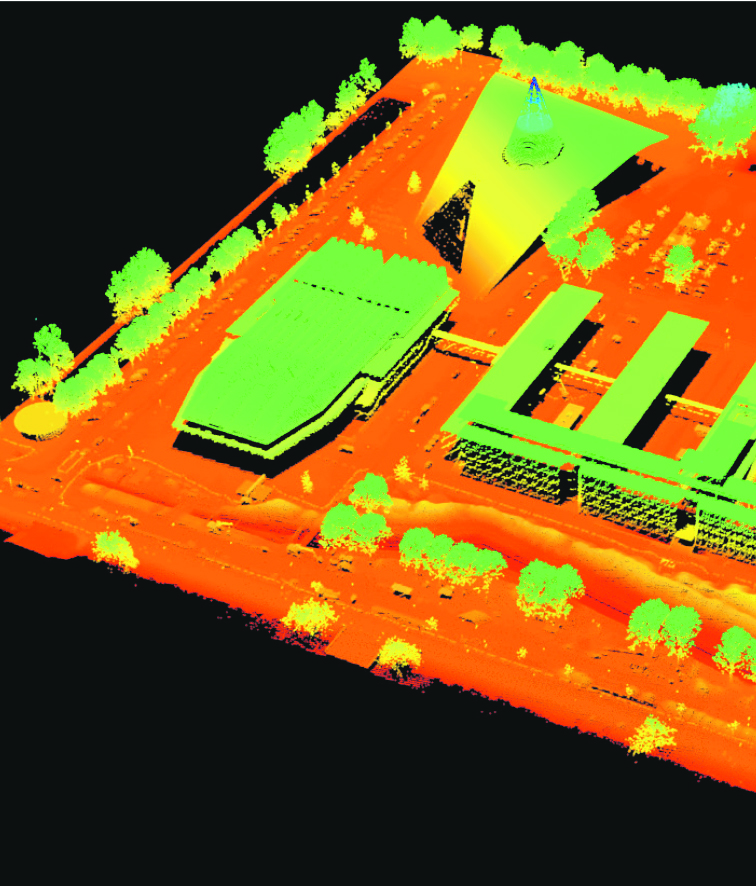Peak pollution
How does smoke and dust from highways move around in the city? That’s what the research project DisTUrbe (dispersion by turbulence in urban environment) is all about.
Project manager Dr Gerrit Elsinga (3mE) says the project aims to produce better forecasts for air pollution in the city by determining how air moves around at a scale of 10 to 1000 metres. The 900,000 euros STW-funded project will incorporate two PhD students and a postdoc.
“My first appearance in print was in 2009, in Delta 31, with a feature article about the eco-storm. Holding a copy that you’ve worked on for the first time is one of those feelings that never get old. Yet I still marvel at the ultimate accident of how I started writing for Delta. Having been a regular reader of Delta’s English Pages, I also had the feeling that some writings were slipping into the cliché trap. So one day I decided to share my opinion with the editor, found his contact details and wrote him a letter. A week later, having forgotten about my letter-to-the-editor, I got a reply back, saying that my feedback was well appreciated and inviting me to contribute to Delta. I accepted. But soon a thrill of fear struck me: where had this come from anyway, the guts that made me, a novice who barely passed her literature exam in school, reckless enough to pen for a newspaper? Life is like a box of chocolate, I guess.
I started first as a journalist, mainly writing reports and interviews, but then got the chance to express my own opinions on subjects that really interested me, like generation alpha girls, networking, the Dutch fashion mentality…. The joy of discovering my flair for the written word, bit by bit, is motivates me to keep writing. Other motivations come from the excitement I feel when catching sight of someone at a neighboring table eyeing my article, my articles’ ‘times read’ hits on the website, and readers taking time to comment on my pieces. It may sound corny, but I feel so grateful at these moments. Earlier this summer I started my column in Delta. To track all my writings, I also started a blog, which unexpectedly later brought me new clients.
But besides all this, there’s also something else you should know before plunging into the world of freelance writing. As a freelance writer next to your normal student role, ‘weekend’ often doesn’t quite equal end-of-work. Midmorning on Saturdays often finds me sitting in front of my laptop or bouncing around the room with it (depending on how much coffee I’ve consumed). Inspiration doesn’t come free. Internet research with mind-mapping afterwards is a must, while M&M candies help accelerate the process. In rare cases, all that is required is a cappuccino at Coffee Company and some people-watching.
Finally, after hours of inspiration-nurturing and sugar and caffeine boosts, it comes down to that one moment: kick-start typing, the most difficult part of writing, having avoided the seemingly insurmountable for as long as you can. Avoidance techniques differ from person to person, but my evasion usually includes searching for long-lost items, doing laundry, vacuuming or looking through every friend’s Facebook updates. But as tedious as this process is, the sentence-sprouting moment does come in the end, and usually becomes a piece of writing I’m happy with. So that’s my story, and if you find a slice of fascination in it, well, you now know how to become one of ‘us’.”
Lei Li is from Shanghai, China. She can be contacted at: LeiLivanShanghai@gmail.com


3D Campus
What happens when torrential rains pour down on a city? Which streets are the first to be flooded? One needs a 3D map of the area to find out. Six students of the interfaculty master geomatics programme have created such a map for (a part of) the campus in their synthesis project. They combined a number of datasets, aerial photographs and basemaps to arrive at a 3D representation of the area. When they unleashed their virtual cloud bursts, the run-off looked realistic. The students hope HydroCampus may be used as a tool in assessing the urban climate.
www.geomagics.nl
Coast guard
The Dutch coast is a dynamic one. Sand and sea are involved in an eternal interplay of erosion and sedimentation. To obtain a better understanding of this process and its effects on the coast, Professor Marcel Stive (CEG) will start a 5-year research project: ‘Near-shore Monitoring and Modeling’. The project, funded by an ERC grant of 2.9 million euros, should produce reliable, long-term predictions of changes along the coast near The Hague, which are current missing.
Crime watch
3D glasses that allow police investigators to record a crime scene and annotate specifics for later use. Professor Pieter Jonker (EECS) demonstrated his invention on the late night TV show, Pauw & Witteman, with his sister playing the role of a dead body. The glasses are an augmented reality application developed for use in forensic science. A dozen articles, radio and TV shows reported on the virtual crime scene, developed together with the Dutch forensic institute in what is called the CSI-lab.


Comments are closed.